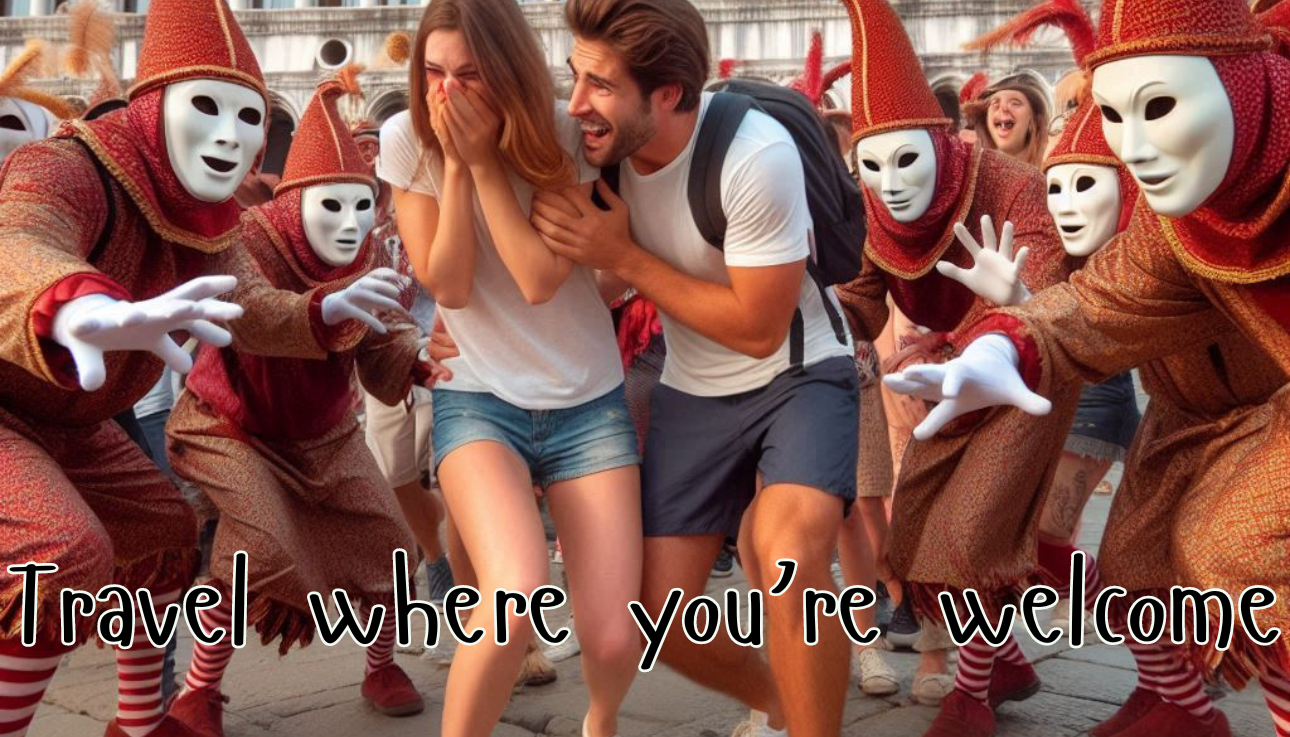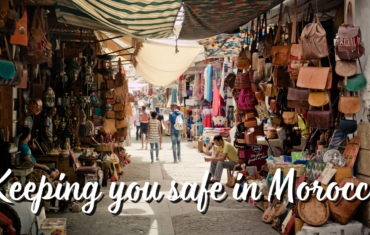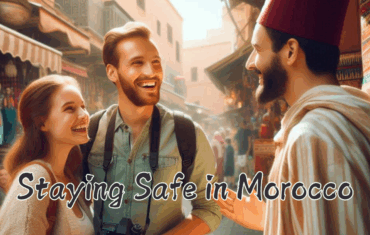As a seasoned tour operator who has spent the better part of two decades exploring the globe, looking for new places and adventures for our clients, I’ve witnessed firsthand the ebb and flow of tourism trends. Recently, a striking contrast has emerged between two popular travel destinations: Europe and Morocco. While Europe grapples with a growing hostility towards tourists, Morocco continues to welcome visitors with open arms. This shift is reshaping the landscape of international travel and prompting travelers to reconsider their destination choices.

The Europeans Are Revolting
Europe has long been the crown jewel of international tourism. Its rich history, diverse cultures, and iconic landmarks have drawn millions of visitors annually. However, in recent years, a palpable tension has developed between locals and tourists in many European cities.
Venice, once a dream destination for romantics and history buffs alike, now struggles under the weight of overtourism. The city’s delicate infrastructure and unique ecosystem are buckling under the pressure of cruise ships and day-trippers. Locals, feeling pushed out of their own city, have staged protests against the tourism industry. Signs reading “Tourists Go Away!!! You Are Destroying This Area” have become an all too common sight in the floating city.

Barcelona faces similar challenges. The Catalan capital’s popularity has led to skyrocketing rents and a local housing crisis. Graffiti proclaiming “Tourists Go Home” adorns walls in popular areas like La Rambla. The city has implemented measures to curb Airbnb rentals and limit new hotel construction, clear indications of the growing frustration with mass tourism.
Even in Amsterdam, a city long known for its liberal attitudes, patience is wearing thin. The red-light district, once a curiosity for travelers, is now being moved out of the city center. Local authorities are actively discouraging “nuisance tourists” who come for cheap thrills rather than cultural experiences.
This growing hostility isn’t limited to major cities. Picturesque villages in Italy and France, once eager for tourist dollars, now find themselves overwhelmed by Instagram-driven crowds seeking the perfect shot. The result is a loss of authenticity and a strain on local resources.
The root causes of this shift are complex. Overtourism, rising living costs for locals, the proliferation of party tourism, and the disconnect between transient visitors and resident communities all play a role. The COVID-19 pandemic briefly alleviated some of these pressures, but as travel rebounds, the underlying issues are resurfacing with renewed intensity.
Morocco: A Welcoming Oasis

In stark contrast to Europe’s growing tourist fatigue, Morocco stands out as a beacon of hospitality. This North African nation has long been a crossroads of cultures, and its tradition of welcoming visitors remains strong.
From the moment you step off the plane in Casablanca or Marrakech, there’s a palpable sense of excitement from locals eager to share their culture. Unlike in some European cities where tourists might feel like unwelcome intruders, in Morocco, visitors are often treated as honored guests.
In the winding alleys of Fez’s medina, shopkeepers invite passersby in for tea, not just as a sales tactic, but as a genuine gesture of hospitality. In the Sahara, Berber nomads welcome travelers into their tents, sharing meals and stories under the vast desert sky. Even in busy tourist areas like Djemaa el-Fna square in Marrakech, there’s a sense of mutual curiosity and respect between visitors and locals.
This welcoming attitude isn’t just cultural; it’s also a matter of national policy. The Moroccan government has invested heavily in tourism infrastructure while also implementing measures to preserve local cultures and environments. Unlike some European destinations that seem to view tourists as a necessary evil, Morocco sees visitors as integral to its economic and cultural future.
Morocco has also been proactive in addressing potential sources of friction. For example, initiatives to train local guides and regulate tour operators help ensure positive experiences for both visitors and residents. Morocco’s approach to tourism development aims for sustainability, balancing economic benefits with cultural preservation and environmental protection.
A Tale of Two Approaches
The contrasting experiences in Europe and Morocco highlight different approaches to tourism management. Europe, particularly in its most popular destinations, is grappling with the consequences of decades of unfettered tourism growth. The backlash we’re seeing is, in many ways, a cry for balance and sustainability.
Morocco, on the other hand, has the advantage of learning from Europe’s mistakes. By prioritizing sustainable tourism from the outset, Morocco is working to avoid the pitfalls of overtourism. The country’s approach emphasizes quality over quantity, focusing on cultural exchange and authentic experiences rather than mass market appeal.
This isn’t to say that Morocco is without challenges. Popular destinations like Marrakech have seen rapid development, and there are concerns about preserving traditional ways of life. However, the overall attitude towards tourism remains overwhelmingly positive.
What This Means for Travelers
For travelers, these shifting dynamics present both challenges and opportunities. Those dreaming of European adventures may need to recalibrate their expectations. Visiting Europe’s most popular destinations now requires more careful planning and a greater sensitivity to local concerns. Off-season travel, venturing beyond the usual tourist trails, and making efforts to engage respectfully with local cultures can help mitigate some of the tensions.
Morocco, meanwhile, offers a refreshing alternative. Here, travelers can experience the thrill of discovery in a welcoming environment. The country’s diverse landscapes – from Atlantic beaches to Alpine-like mountains to Saharan dunes – provide a wealth of experiences. Its rich culture, blending Arab, Berber, and European influences, offers endless fascination. And importantly, visitors can explore knowing that their presence is appreciated rather than resented.
Looking Ahead
The contrasting situations in Europe and Morocco offer valuable lessons for the future of global tourism. Europe’s struggles highlight the need for sustainable tourism practices and better management of visitor numbers. Morocco’s success underscores the importance of maintaining a welcoming attitude while planning for long-term sustainability.
As travelers, we have a role to play in shaping the future of tourism. By choosing destinations that welcome us, engaging respectfully with local cultures, and being mindful of our impact, we can help ensure that the joy of travel is preserved for generations to come.
In this evolving landscape, Morocco shines as an example of how a destination can embrace tourism while maintaining its cultural integrity. For those seeking adventure, culture, and genuine hospitality, Morocco’s doors are wide open. As Europe works to redefine its relationship with tourism, Morocco offers a timely reminder of the transformative power of travel when it’s approached with mutual respect and enthusiasm.





